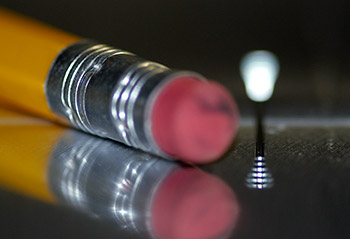Understanding microchannel heat exchange
6th March 2015
USA: Groundbreaking research involving cutting-edge 3D metal printing and advanced neutron imaging is enabling scientists to better understand the heat transfer characteristics of refrigerants in micro-channel heat exchangers.
Researchers at the US Department of Energy’s Oak Ridge National Laboratory have captured undistorted snapshots of refrigerants flowing through small heat exchangers, helping to increase understanding of the characteristics of heat transfer.
The non-invasive techniques allowed the researchers to visualise how refrigerants reacted to different temperature levels without disrupting the refrigerant flow.
“That’s what we’re trying to understand—what does the refrigerant look like on the inside of these channels?” said Patrick Geoghegan, a researcher with the Buildings Technologies Research and Integration Centre. “Then you can understand how the heat transfer is actually taking place.”
Microchannel technology is being increasingly adopted by manufacturers in heating, air conditioning and refrigeration products, both for their enhanced energy efficiency, cost and reduced refrigerant charge.
The goal with microchannel heat exchangers is to improve overall heat transfer, which could potentially reduce the temperature difference between the air and a refrigerant. Additionally, the heat exchangers minimise airside pressure drop, which results in more energy savings gained from the fan energy consumption.
Past research has focused on refrigerant heat exchange, but the ORNL team is the first to make use of neutron imaging in microchannel studies. Neutron imaging is an improved form of x-ray, offering non-destructive testing methods to investigate the internal structure of objects.
Previously, the usual mode of operation was to cut off the top of a larger heat exchanger tube, cover it with Plexiglas and then peer inside as it was heated, a method Geoghegan said could lead to inaccurate results.
With the issue in mind, the ORNL team turned to microchannels and partnered with 3D printing company Fabrisonic to specifically design them for neutron imaging. Additive manufacturing kept the microchannels small and compact, eliminating the need for extra material and refrigerant, and provided a cost-effective and environmentally friendly approach to the research.

Fabrisonic provides 3D metal printing services in a wide range of metals using low‐temperature ultrasonic additive manufacturing technology. Sound waves are harnessed to merge layers of metal foil in a process that requires no melting.
Fabrisonic’s “impossible” aluminium microchannel heat exchanger features precise internal passages on the scale of .010in (0.25mm).
“Additive manufacturing helped achieve the best experimental conditions,” Geoghegan said, adding, “The microchannel heat exchangers use very little material and refrigerant and that’s great for minimising the global warming potential.”
To observe the effects of heat on microchannels, the researchers ran refrigerant through the microchannels and subjected them to increasing amounts of heat over five days. At a number of cool-, medium- and high-heat stages, the team used neutrons from ORNL’s High Flux Isotope Reactor—a DOE Office of Science User Facility—to take images of the refrigerant while it was in the microchannel.
The microchannels rested horizontally, and the expected outcome was that gravity would cause the liquid portion of the refrigerant liquid/vapor mixture to sink to the bottom of the microchannel, leaving less area for heat transfer.
Instead, the images showed that surface tension properties of the microchannels caused the refrigerant liquid to stick to all sides of the microchannel, maximising the amount of area available for heat transfer. Only at elevated temperatures was the refrigerant liquid forced to the centre by vapour and no longer able to absorb and take heat away from the microchannel walls at a rapid rate.
“The beauty with microchannels is that surface tension comes into play, and surface tension holds the refrigerant liquid onto all the surfaces of the microchannel,” Geoghegan said. “That’s why you see equal refrigerant liquid on the top and bottom surfaces.
“The entire area is still available for heat transfer and that’s what you want,” he said.
With the additive manufacturing, neutron imaging and microchannels work, the team is just heating up. Geoghegan also expects to publish a journal article and continue experimenting with the ability of refrigerants in small microchannels to work efficiently in high heat by keeping all surfaces wetted with liquid until the evaporation process is completed and no more liquid remains.







